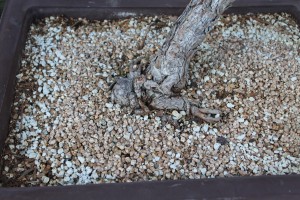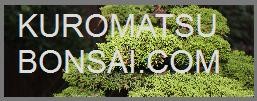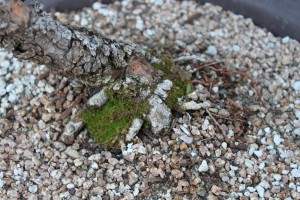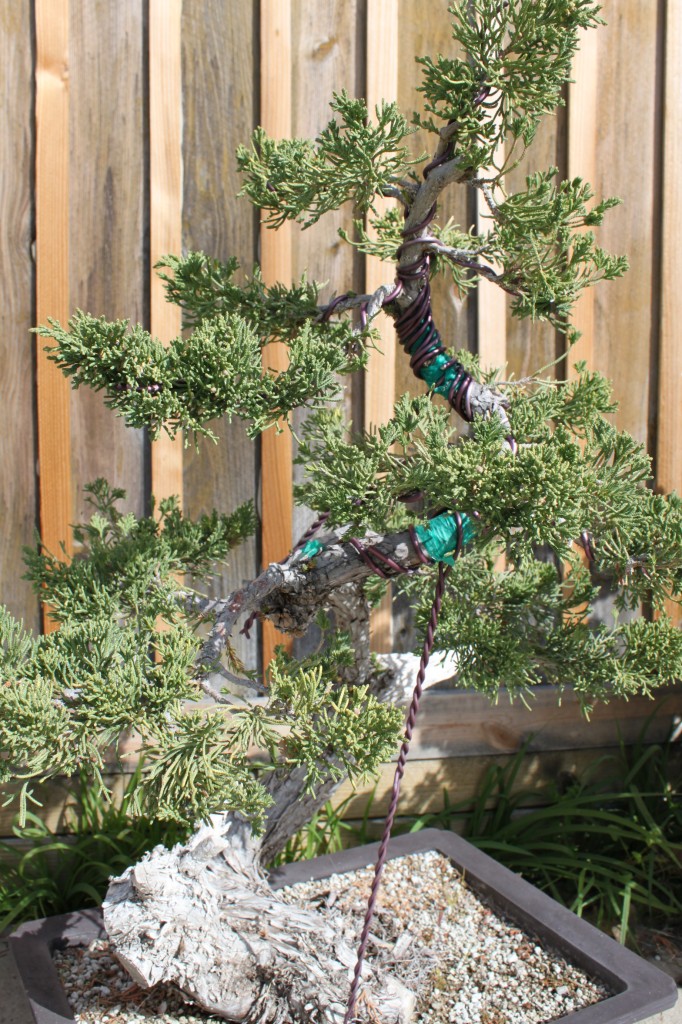Bonsai Soil
Bonsai Soil
Volumes have been written about bonsai soil. Bonsai artists and growers argue about soil the way hot rodders argue about engine tuning. The truth and reality is, THERE IS NO ONE IDEAL RECIPE FOR BONSAI SOIL. There are some good ideas out there, but climate variations and unavailability of materials make it impossible for one soil recipe to work in all parts of the world.
Let’s Start With the Basics
Potting soil for houseplants or patio plants, in and of itself, does not work. This kind of soil is usually 100% compost, and is designed for people who water infrequently and never add fertilizer. It is also usually designed for tropical plants or fast growing annuals, so the emphasis is on water retention, and maximizing the nutrients in the soil. For a bonsai tree, which has entirely different growth habits, using this kind of soil is a disaster. The soils sold in stores and nurseries as “bonsai soil” are just as bad. They generally use lots of perlite or vermiculite. Either of these materials is fine if used in moderation, but making the entire aggregate component of perlite or vermiculite is like trying to grow the tree in a bed of Styrofoam pellets. If you are going to buy s prepackaged soil for use with bonsai trees, look for cactus mix. Palm tree mix is an even better choice, if it is amended with other materials to improve drainage. We are not going to use potting soil as bonsai soil – but we can use some kinds of potting soil as one of the building blocks for good bonsai soil.

Adapt Your Soil to Your Weather
I have had a lot of self-styled bonsai experts tell me I should be using 100% inorganic soil in my trees. Uh, no, thank you. A few years ago we did an outdoor show in April, and on one of the days the temperature unexpectedly rose to 105 degrees Fahrenheit. Some folks’ trees died that day, but not any of mine. In September, 2010, the mercury hit 113 around here. I watered only once that day and I still did not lose any trees. If you live in Japan, or the Pacific Northwest, or Great Britain, you can use that inorganic mix of akadama, pumice, charcoal, sand, whatever, and pile the fertilizer on top. Do that where I live, and when the next heat wave comes, or the Santa Ana winds blow hot, you’d better be out there with the water hose all day long, or your trees are going to be firewood.
Those bonsai guys who say the soil has to drain straight through immediately? If they live in Seattle, or Southern England, and you live in Phoenix or Las Vegas, don’t listen to them. Think about the weather your plants will experience. If you can, get your soil advice from a bonsai grower who lives near you.
Also consider your tree’s reaction to the weather. A ficus growing in the desert will need a lot of water retention in the soil. A Japanese Black Pine growing in England or the Pacific Northwest will need the maximum drainage possible. Even within your own yard, water consumption is going to vary from tree to tree depending on the species of tree and the location where it is kept. Junipers like full sun, and I have one Juniper that dries out its soil every day, even though I have nearly 40% organic matter in the pot in order to facilitate water retention. On the other hand, I have a Chinese Elm growing in the same mix in a shady location. Sometimes that Chinese Elm goes for a week without needing to be watered.
But this brings in the siting consideration. A lot of experts and bonsai nursery owners keep all their trees under shade cloth, so they can use fast draining soil. Can you keep all your trees under shade cloth? Especially if you have a lot of trees? What is the neighborhood homeowner’s association going to say about that? Or worse, what happens when the cops knock on your door with a search warrant, because they think you are growing something other than bonsai trees?
And what about your own lifestyle? If you are retired and never travel, and your trees are your best friends, and you can water them three times a day when it gets hot, then use the 100% aggregate with fertilizer on top approach. But what if you travel? Do you like to take a romantic weekend with your significant other every so often? Can you trust a friend or relative to come and water everything? And what if your designated watering person has car trouble or gets sick? Your trees may have to go a few days without being watered. Mine can take it. Can yours? Some folks use an automatic drip irrigation system. Those work great, but they do break down occasionally.
Organic vs. Inorganic
Soil materials come in two varieties: Organic and inorganic. Organic matter can consist of many things, but the best for bonsai use is composted tree bark. For inorganic matter, there are many choices. The classic choice is Akadama, a form of fired clay pellet found in Japan. A good alternative is decomposed granite, which does not break down over time. Pumice is another good choice. Coarse sand is also a good inorganic soil component, and one that the Japanese often mix with Akadama. What if you cannot source any of these materials locally? The other choice is diatomite, which can be found as automotive spill absorbent at the NAPA auto parts stores, and can sometimes be found as cat litter. If you decide to use automotive spill absorbent or cat litter, make sure of two things: 1) that it does not have any perfumes, deodorants or chemical additives, and 2) that it does not break down when you water it.
More about that “Bonsai Expert” soil:
Don’t get me wrong. I am not ridiculing or insulting anyone’s expertise in bonsai. There are some bonsai experts out there who are touting a certain soil recipe which consists entirely or almost entirely of inorganic matter, and is made up of varying proportions of decomposed granite, coarse sand, akadama, agricultural pumice, and maybe a little bit of charcoal. And these guys are experts, believe me. They know bonsai the way those guys on cable TV know how to make motorcycles. Have I tried this mix? Yes I have. What were the results? Well imagine if you decided to ride a custom motorcycle or drive a hot rod to work every day. You can do it, but it does demand some changes in your lifestyle. The “expert soil” is the equivalent of a hot rod. Lots of performance, but not much protection from the weather, and not much crash protection.
You can use the “expert soil recipe” if you want, but you are going to have to make some changes to your lifestyle if you do, because using it means you have to pay attention to your trees all the time. The experts don’t care about this because they always have students, acolytes and underlings to care for the trees for them.
My Own Soil Recipe:
My soil recipe is not a hot rod. It is more the equivalent of a high end minivan. It will get you where you need to go, and protect you from calamity. Here it is: 30% Decomposed Granite; 30% agricultural pumice; 10% coarse sand, and 30% organic matter. I use whatever potting soil I find at the “big box” store, as long as the primary ingredients are composted organic matter and there are no water retaining additives.
Okay, I think I found the right ingredients, now what?
First, sift your ingredients through an old metal window screen to remove all the fine particles. Then, mix your ingredients in a bucket. The proportions of the ingredients will vary, with the critical proportion always being the amount of organic matter. Most growers recommend 20% to 30% organic matter for pines and Junipers, and 30% to 40% for broadleaf trees. Once you have your bonsai soil mixed, you can proceed with potting your trees.
Growing Trees With This Soil:
I will freely admit it: Sometimes, I practice “bonsai with training wheels on it.” The organic component in my soil will not hurt the tree. It serves the same function as a padded interior and an airbag in a car. The organic part of the soil is your insurance policy and your crash protection. If you forget to water, it holds a small reserve of water for your tree. If you forget to fertilize, it holds some nutrients. If you follow proper routines, and do everything according to schedule, that little reserve is there if your tree needs it.



